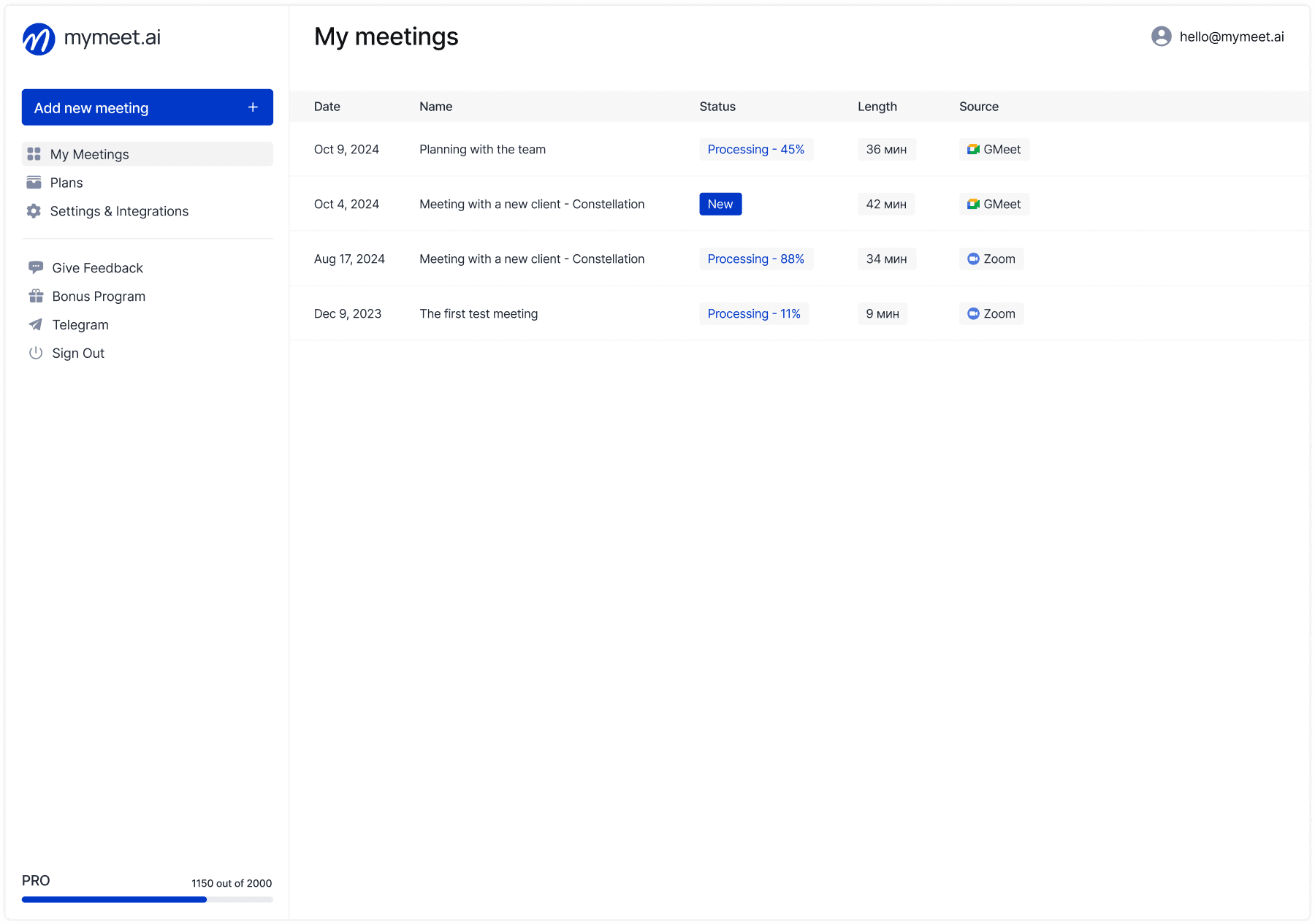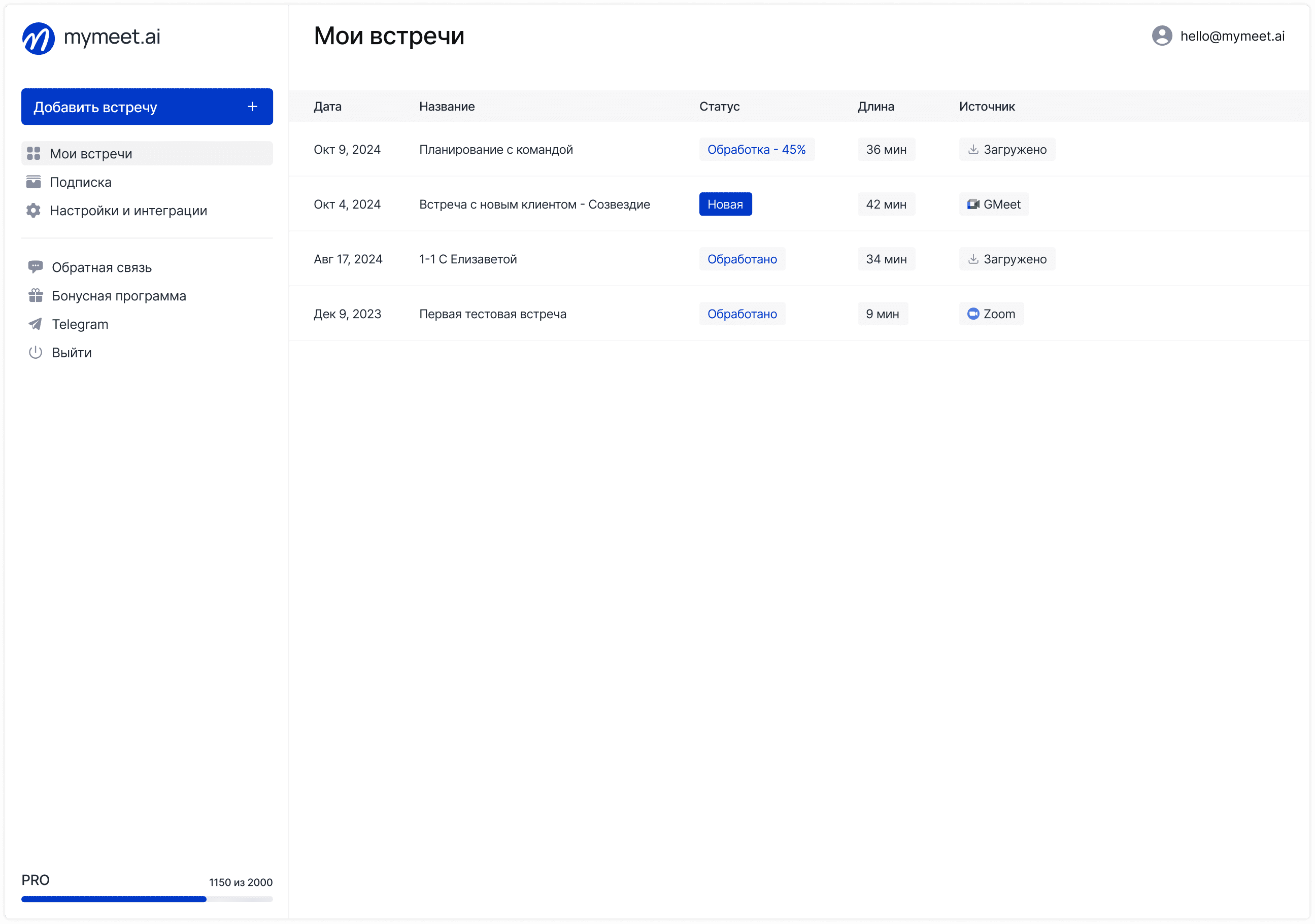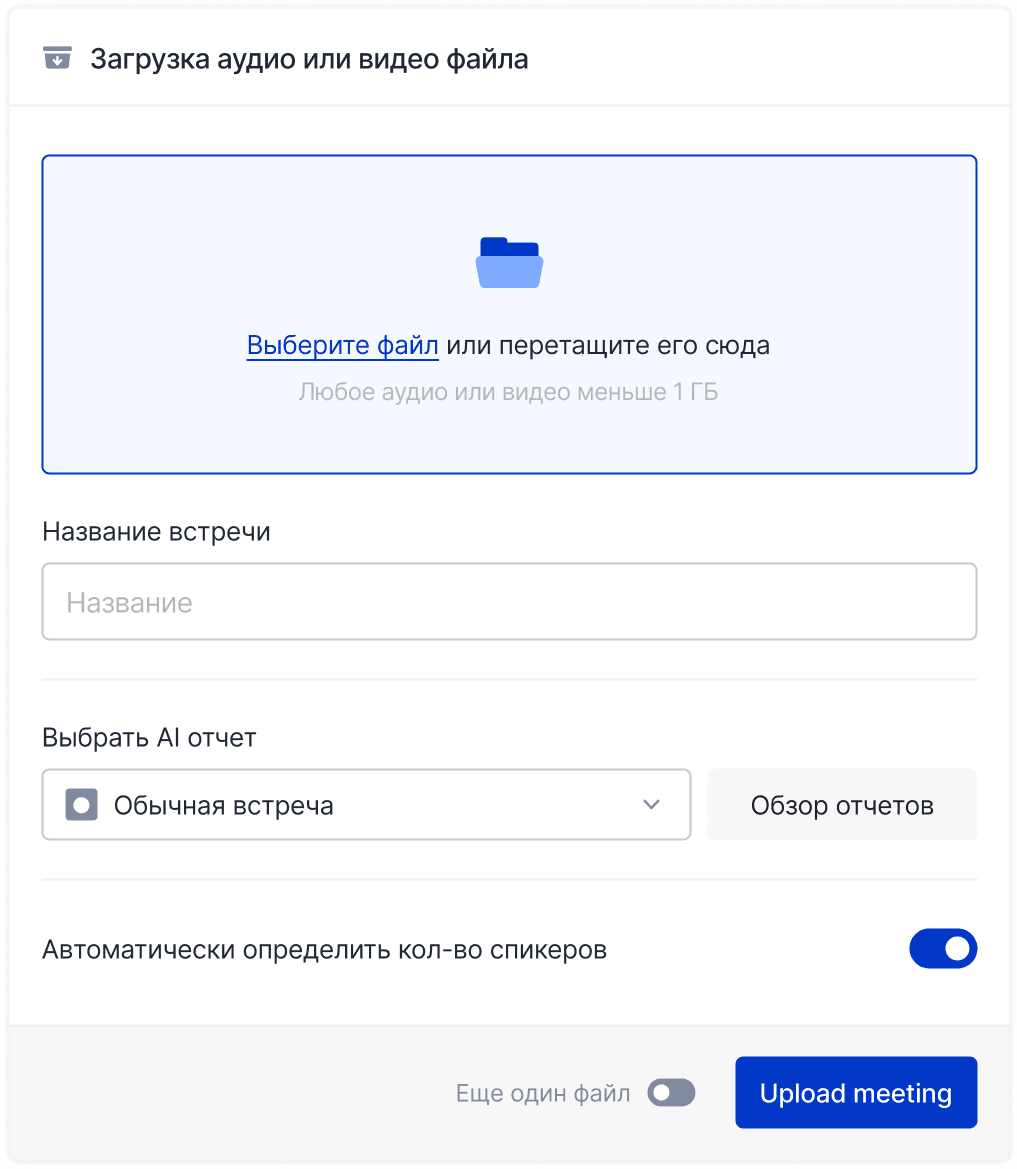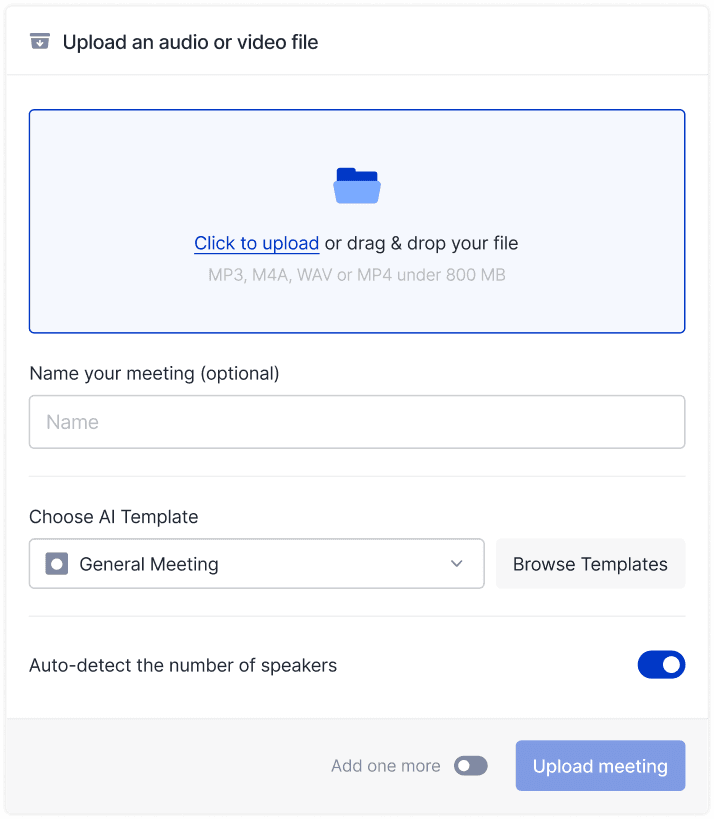Meeting Tips

Andrey Shcherbina
Nov 10, 2024
The minutes of the meeting are an important tool for recording the main points of discussion and decision–making. It is a more formal and formal form of documentation aimed at preserving all key decisions, assigned actions and responsible persons.
The introduction of protocols into the regular practice of meetings helps not only to maintain transparency in communication, but also helps to increase the effectiveness of the team. Each team member can be sure that their tasks and responsibilities are clearly defined and fixed, which minimizes the likelihood of mistakes and misunderstandings.
In this article, we will look at what a meeting protocol is, what elements it includes, and how to properly arrange it in order to get the most out of each meeting. We will explain what types of protocols exist and how they help in various work situations, as well as offer examples of templates and best practices.
What is the meeting protocol and why is it needed?
The minutes of the meeting are an official document that records the key points of the meeting, including the main discussions, conclusions, decisions and assigned tasks. It is distinguished by its formality and detail, which makes it especially useful for meetings where it is important to keep a clear and formal account of all agreements.
Why do I need a meeting protocol? The protocol helps the team to be on the same wavelength, avoid misunderstandings and keep the tasks and goals set at the meeting in focus. It is also important for subsequent analysis and use of meeting data to improve workflows. Protocols help to track the completion of tasks, facilitate reporting and increase the responsibility of all participants for the actions performed.
Meetings without protocols often become a source of misunderstanding: participants may interpret agreements in different ways or forget about their tasks. Protocols eliminate this problem by making the results of the meeting clear and accessible to everyone.
How does the meeting protocol differ from other forms of results?
The difference from the meeting summary
A summary is a shorter format that captures the main conclusions, tasks and responsible persons. Unlike the protocol, the summary does not include all the details of the discussion, but only the key points and decisions made. For more information on how to make meeting summaries, read our article "Meeting Summaries: The Complete Guide".
The difference from the meeting notes
Notes is the shortest format, which includes only the main conclusions and tasks, without additional details. Meeting notes usually take only a few sentences and are used to quickly convey basic information. Learn more about how to make a notes of meetings in our article "Meeting notes: what is it and how to compose it?".
The main elements of the meeting protocol
The agenda.
The agenda defines the key issues to be discussed at the meeting. This helps participants prepare in advance and focus on priorities. A clearly formulated agenda avoids deviations from the topic and makes the meeting more productive. It is important to keep in mind that the agenda should be available to all participants in advance so that everyone can make suggestions or prepare questions.
The participants of the meeting.
It is important to record who was present at the meeting in order to understand who took part in the discussions and who should be aware of the decisions taken. The protocol should contain a list of all participants, including those who could not attend, but should be aware. This allows for information transparency and avoids situations where someone is not aware of important decisions.
The main topics and solutions.
Recording all the topics discussed, including conclusions and decisions made, helps to track progress and understand what tasks need to be completed. It is important to record not only the final decisions, but also the arguments that led to them. This will help to understand the context of decisions in the future and avoid repeated discussions of the same issues.
Actions and responsible persons.
It is important to record the specific actions that need to be performed after the meeting, and assign those responsible for completing these tasks. This is one of the key elements of the protocol, which helps to ensure the implementation of all agreements. It is necessary to clearly indicate who is responsible for which task, as well as set deadlines. This allows you to monitor progress and increases the responsibility of each participant.
Types of meeting protocols and their features
The protocol of the business meeting.
Business meeting protocols usually include more formalized elements, such as decisions made, designated responsible persons, and deadlines for completing tasks. Such protocols are important for recording strategic decisions, allocating resources, and setting priorities. Long-term goals are often discussed in business meetings, which makes it important to carefully document each stage of decision-making.
The protocol of the meeting with the client.
Such protocols are important for recording key discussions with clients, including promises, requests, and agreements. This helps to maintain clarity in communication with the client and avoid misunderstandings. The protocol of the meeting with the client should also include the client's expectations and deadlines for fulfilling obligations, which allows you to build trusting relationships and avoid conflicts in the future.
Minutes of the working meeting.
The minutes of work meetings may be less formal, but it is important to record the main tasks and solutions to maintain the productive work of the team. Such meetings often relate to current tasks and small projects, but documenting them helps to keep all processes under control and not lose important details. Meeting protocols allow you to avoid duplication of tasks and improve interaction between team members.
The protocol of the strategic meeting.
Strategic meetings include discussion of long-term goals and planning. The minutes of such meetings record the vision, strategies and actions needed to achieve these goals. Strategic protocols help to monitor progress in the implementation of strategic plans and adjust actions as necessary. It is important that the minutes of strategic meetings be detailed, as they serve as the basis for making key decisions.
mymeet.ai helps sales departments improve efficiency and automate the creation of meeting protocols. You can read more about how our AI saved the sales team time in the case study.
How to make a meeting protocol: step-by-step guide
Preparation of the agenda.
Before the start of the meeting, it is important to prepare an agenda so that all participants are aware of the topics to be discussed. The agenda should be clear and contain specific issues for discussion, as well as a time frame for each item. This helps to avoid delaying the meeting and keep the participants within the framework of the topic under discussion.
Recording key points.
During the meeting, it is necessary to record the main topics, decisions and agreements in order to preserve all important details. It is necessary to pay attention not only to the decisions made, but also to the arguments that were discussed, as this may help in the future to understand why a particular decision was made.
Confirmation of decisions and actions.
After the meeting ends, you need to make sure that all participants understand their tasks and the actions that need to be taken. This can be achieved by briefly reviewing the protocol at the end of the meeting and clarifying all agreements. This approach helps to avoid misunderstandings and ensures that all participants will act within the framework of the agreements.
The final distribution of the protocol.
After the meeting, it is important to send the final protocol to all participants so that they can familiarize themselves with the details and confirm their tasks. The final newsletter may also include comments or suggestions for improvement, which helps to make the process more transparent and understandable for all participants.
Best practices for meeting minutes
Avoiding the human factor.
Minimize the risk of errors in the preparation of the protocol. It is important to use proven methods and tools for logging to minimize the possibility of missing important details. For example, an audio recording of meetings can serve as a useful addition to written notes and help in case something was missed.
Digitization of meeting data.
Use digital tools to keep minutes and store meeting data. Digitization helps not only to simplify access to protocols, but also facilitates their search and analysis in the future. Using cloud services allows you to store all records in one place and share them with the team in real time.
Timely updating of protocols.
It is important to update the information in the minutes immediately after the meeting to avoid losing important details. Delays in updating protocols can lead to misunderstandings and loss of important data. It is important that those responsible have clear instructions on how to make changes in a timely manner.
Using automation tools.
Modern technologies can facilitate the process of logging and make it more accurate and efficient. There are various programs and applications that help automate the creation of protocols and make them more structured. This helps to save time and improve the accuracy of documentation.
Application of meeting protocols in the official and business environment
Meeting protocols are actively used in various business and official contexts to record important decisions and ensure transparency of processes. The following are scenarios in which protocols are particularly useful.
Business meetings.
The minutes of business meetings help to record all the key decisions and tasks made during the discussions. They ensure the formal fixation of agreements, which is especially important for strategic sessions, negotiations with partners and management decision-making. This helps to avoid disputes and misunderstandings, since all decisions are clearly documented and approved by all participants.
Strategic sessions.
Strategic sessions require careful documentation of all issues discussed, decisions taken, and future actions. The minutes of such meetings record the long-term goals and strategies discussed by the participants, which helps to track their implementation and adjust plans as necessary. The minutes of the strategic sessions play a key role in maintaining consistency between the different departments of the company.
Meetings with clients.
The minutes of meetings with clients allow you to record all the agreements discussed during the communication. This may include customer requests, deadlines, arrangements for additional services, and other details. Protocols help to ensure transparency and trust in customer relationships, and also serve as a basis for subsequent interactions, preventing possible misunderstandings.
Using meeting protocols allows not only to record decisions, but also to save the team time. An example of this approach can be seen in our case, which describes saving the company's time.
Common mistakes in keeping meeting minutes
Insufficient detail.
It is important to capture all the key points and how to avoid common formulations. Insufficient detail can lead to misunderstandings among participants, as the information will be interpreted in different ways. It is important to pay attention to specific formulations and avoid using too general expressions.
Absence of responsible persons.
An error occurs when those responsible for completing tasks are not assigned, this reduces efficiency. If tasks are left without responsible persons, the implementation of decisions is delayed or does not occur at all. Protocols should clearly indicate who is responsible for completing each task and within what time frame.
The delay in the preparation of the final protocol.
It is important not to delay the preparation and distribution of the protocol after the meeting. It is important to record information immediately after the meeting so that participants can return to their duties without forgetting about the agreements. A protocol prepared with a delay can lead to missed deadlines and missed opportunities.
Technological solutions for meeting protocols
mymeet.ai
mymeet.ai helps to automate the process of creating and storing meeting protocols, minimizing the human factor and increasing efficiency. The service is able to connect to online meetings, recognize speech, create structured protocols and store them in the cloud, which makes the documentation process more convenient and accurate. mymeet.ai It offers six types of protocols for various types of meetings, including business, work and strategic meetings, and also allows you to immediately send them to all participants after the meeting ends. This helps to ensure transparency and involvement of all participants, which increases the overall level of organization and responsibility in the team.
Why is the meeting protocol important for a modern team
The protocol as a task control tool.
It helps to track the completion of tasks and improve teamwork. Protocols allow you to know exactly who is responsible for what and what deadlines are set. This helps the team effectively manage time and priorities, as well as track the progress of tasks.
Influence on communication in the team.
Improve interactions and understanding within the team by clearly recording solutions and tasks. Protocols eliminate the need for endless clarifying questions and help all participants to be aware of the current status of the project, which significantly improves communication.
Maintaining transparency.
Keeping protocols promotes transparency of processes and strengthens trust within the team. Transparency in the processes is one of the key factors for the success of the team. When all team members have access to the protocols, it helps to avoid misunderstandings, ensures openness of solutions and strengthens a sense of responsibility.
Frequently Asked questions about meeting protocols
Which format is better to use for the protocol?
Different formats may be suitable for different purposes. For example, text documents are convenient for small meetings, while more formalized structures are better suited for strategic meetings.
What is the difference between the protocol of a business meeting and the protocol of negotiations?
The minutes of business meetings include more formalism and focus on strategic decisions, while the minutes of negotiations focus on agreements between the parties.
How often do I need to update the protocols?
Protocols should be updated immediately after changes or as tasks are completed. This helps to avoid outdated information and keep all data up-to-date.
What are the best tools to use to automate logging?
Modern tools such as mymeet.ai , Notion and others, allow you to automate the processes of creating and storing protocols, increasing accuracy and ease of operation.
Protocols are not just a formality, but an important tool that helps the team achieve its goals, improve communication and ensure transparency of processes. Using protocols helps to avoid mistakes, increase the responsibility of participants and facilitate project management.
Use the functionality mymeet.ai for convenient management and storage of meeting minutes. mymeet.ai — this is a modern solution that automates protocol management, making the process simpler and more efficient. We offer a free period of 180 minutes of processing, you can start using the service without additional settings.
Andrey Shcherbina
Nov 10, 2024








